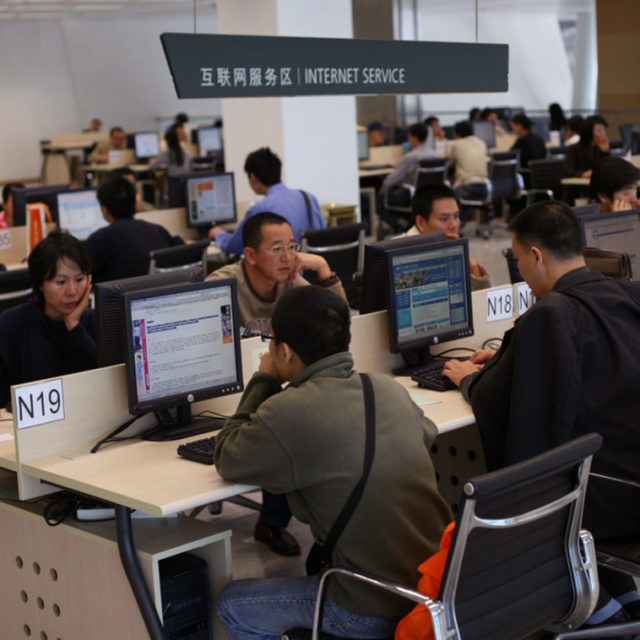According to a January 2013 report by the China Internet Network Information Center (CNNIC), the agency responsible for Internet affairs under China’s Ministry of Industry and Information Technology, at the end of 2012 China boasted 564 million Internet users — more than twice the cyber-population of the United States. The typical Chinese Internet user is young (54.4 percent are aged ten to twenty-nine), a student (25.1 percent), urban (72.4 percent), male (55.8 percent) and is on a low-to-no-income (53.2 percent earn 0–2,000 yuan per month).
Most Chinese treat the Internet as a social portal, using it primarily for social applications such as instant messaging, blogging, gaming and social networking, while more traditional applications, such as email and forums have gone into rapid decline. Of particular interest is microblogging, which, as we noted in the 2012 Yearbook, has become very popular among Chinese as a social media platform. The leading social media sites in China are Sina Weibo and Tencent Weibo, each with around 200–300 million users. Sina Weibo serves especially well as a barometer of current discussion in China.
Tencent’s WeChat mobile messaging app has taken off rapidly since its launch in 2011. In early 2013, the company claimed that the service had 300 million users and was continuing to grow. QQ, the original instant messaging platform that Tencent launched in 1998, still has around 380 million registered users. However, while they have massive user numbers by the standards of any other country, Facebook-like social media sites such as Renren (100 million followers) and Kaixin (forty million followers) have failed to achieve the same level of popularity as microblogs.
Accessing the Internet via desktop or laptop computers remains common practice. But the use of mobile devices has exploded in recent years, following the proliferation of Google’s Android and cheaper Chinese smartphones, as well as iPads and other tablet computers in which a mobile phone SIM card can be installed. In 2013, for the first time, 388.3 million Chinese used mobile devices to access the web — more than any other platform.
E-commerce is also growing rapidly in China, with 242 million shoppers spending US$40.6 trillion annually. The most popular online purchases are electronics and clothing from sites such as Taobao, TMall and Jing Dong.
The Chinese Internet
- By end of June 2013: 591 million Internet users (44.1% of total population); 464 million connect via mobile devices
- 26.56 million people went online for the first time in the first half of 2013. Instant messaging netizens hit 497 million, increasing by 29.31 million in in the first half of 2013. 397 million used instant messaging via mobile, increasing by 45.2 million in the first half of 2013
- Online payment users reached 244 million, increasing by 23.73 million in the first half of the year, with a growth rate of 10.8%. Specifically, the number of mobile phone online payment users rose by forty-three percent over the year 2012
The Internet and Media Censorship in China
- Any new website in China must obtain an ICP licence, which is granted by the Ministry of Industry and Information Technology (MIIT)
- Apart from MIIT, Internet content is subject to regulation by a number of other overlapping state organisations:
- General Administration of Press and Publications (GAPP)
- State Administration of Radio, Film and TV (SARFT)
- Ministry of Culture
- State Council Information Office
- Central Publicity Department of the Party (a.k.a. Central Propaganda Department).



